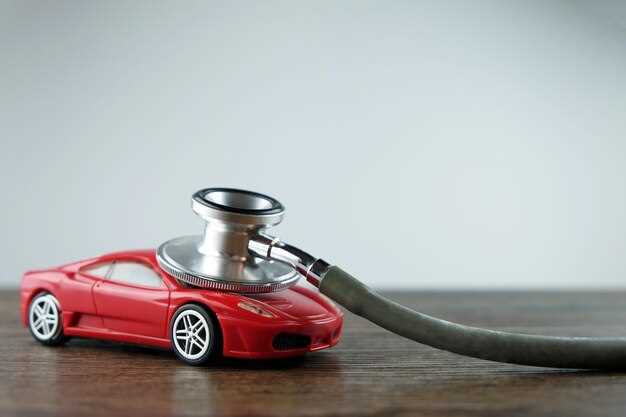
In the world of high-performance vehicles, supercars epitomize engineering excellence and speed. However, even the most meticulously designed drivetrains can encounter challenges, with vibration being one of the most common issues faced by enthusiasts and professionals alike. Understanding the mechanics behind these vibrations is crucial for maintaining performance and ensuring a smooth driving experience.
Vibration within the drivetrain can arise from various sources, including misalignment, unbalanced components, or worn-out parts. Each of these factors can significantly impact not only the vehicle’s performance but also the driver’s comfort and safety. Identifying the root cause of the vibration is essential for effective troubleshooting and repair.
To successfully tackle drivetrain vibration problems, it is vital to conduct a thorough assessment of the vehicle’s components. This includes inspecting the driveshaft, differential, and transmission mounts, as well as evaluating the condition of the tires and wheels. By systematically analyzing each component, it becomes possible to pinpoint the source of the vibration and take appropriate corrective action.
In this article, we will explore common causes of drivetrain-related vibration issues in supercars, provide diagnostic tips, and offer practical solutions to ensure your vehicle operates at peak performance. Understanding these elements will empower you to maintain the integrity of your supercar’s drivetrain and enhance your overall driving experience.
Identifying Common Sources of Drivetrain Vibration
When it comes to supercars, drivetrain vibration can be a significant issue that affects performance and ride comfort. Identifying the common sources of these vibrations is crucial for effective troubleshooting. Below are some prevalent causes of drivetrain vibrations:
- Worn or Damaged Components:
- Driveshaft: A bent or unbalanced driveshaft can create vibrations that resonate through the vehicle, especially at higher speeds.
- CV Joints: Worn CV joints can lead to vibrations during acceleration, particularly when turning.
- U-Joints: Failing U-joints can cause significant play in the drivetrain, leading to vibrations during operation.
- Misalignment Issues:
- Drivetrain Misalignment: Improperly aligned components can result in uneven wear and vibrations due to incorrect angles.
- Engine Mounts: Damaged or worn engine mounts can lead to excessive movement of the engine, causing vibrations to transfer to the chassis.
- Imbalance:
- Tires: Unbalanced or unevenly inflated tires can cause vibrations that may be mistaken for drivetrain issues.
- Wheels: Out-of-balance wheels can also create a vibrating effect, particularly noticeable at certain speeds.
- Exhaust System Problems:
- Loose Components: If parts of the exhaust are not properly secured, vibrations can transfer through the chassis.
- Resonators and Mufflers: Malfunctioning exhaust components can generate unwanted vibrations, affecting overall vehicle dynamics.
- Transmission Issues:
- Transmission Mounts: Worn mounts can lead to increased drivetrain movement, resulting in vibrations while driving.
- Gearbox Problems: Internal issues within the transmission can lead to vibration, particularly under load.
To pinpoint the exact source of drivetrain vibrations, it is essential to conduct a thorough inspection of each of these components. Utilizing diagnostic tools and techniques can also assist in isolating the problem, ensuring a more efficient resolution.
Inspecting and Testing the Driveshaft for Imbalances
The driveshaft is a critical component of the drivetrain system in a supercar, transmitting power from the engine to the wheels. An imbalance in the driveshaft can lead to vibrations that not only affect driving comfort but also cause long-term damage to other drivetrain components. Therefore, proper inspection and testing of the driveshaft are essential for maintaining optimal performance.
Begin the inspection by visually examining the driveshaft for signs of wear, damage, or deformation. Look for any dents, scratches, or signs of rust, which could indicate structural weaknesses. Ensure that all mounting points and bushings are secure and free of cracks, as loose attachments can lead to misalignment and imbalance.
Next, perform a run-out test to check for straightness. This can be done using a dial indicator to measure any deviations as the driveshaft rotates. An acceptable run-out measurement is typically specified by the manufacturer; deviations beyond this range may indicate an imbalance that requires correction.
Another effective method for detecting driveshaft imbalances is the use of a dynamic balancing machine. This device spins the driveshaft at high speeds, allowing technicians to identify any uneven weight distribution. If imbalances are detected, weights can be added or removed accordingly to achieve a balanced, smooth rotation.
Additionally, it’s crucial to inspect the universal joints (U-joints) and CV joints, as worn or damaged joints can contribute to vibrations. Look for signs of lubrication failure, play in the joints, or unusual noise during rotation. Any compromised joints should be replaced to ensure the integrity of the drivetrain.
Lastly, conducting a road test with specialized equipment can provide valuable feedback. Monitor the vibration patterns while accelerating and decelerating to pinpoint the source of the issue. By correlating vibrations with speed, you can determine if the driveshaft imbalance persists across various driving conditions or is localized to a specific range.
In summary, thorough inspection and precise testing of the driveshaft are vital processes in diagnosing and rectifying drivetrain vibration problems. Addressing any imbalances promptly ensures not only improved performance but also the longevity of the entire supercar drivetrain system.
Evaluating Differential Alignment and Functionality
When diagnosing drivetrain vibration issues in supercars, one critical area to examine is the differential alignment and its overall functionality. The differential is responsible for distributing torque to the drive wheels while allowing them to rotate at different speeds during turns. Misalignment or malfunctioning of this component can lead to significant vibrations that compromise both performance and driver experience.
To begin the evaluation, inspect the differential mounting points. Any loose or damaged mounts can lead to improper alignment, causing uneven torque distribution and subsequent vibration. It is essential to ensure that all bolts are tightly secured and that the mounts are free from wear or damage.
Next, assess the alignment of the drive shafts in relation to the differential. Proper alignment is crucial; significant deviations can lead to vibration as the shafts rotate. Utilize alignment tools or consult manufacturer specifications to ensure the driveshaft angles are within acceptable ranges. Furthermore, check the universal joints for wear or binding, as these issues can exacerbate misalignment problems.
Another important aspect to evaluate is the condition of the differential fluid. Low or contaminated fluid can affect functionality, leading to increased friction and heat, which may contribute to vibrations. Ensure that the fluid is at the correct level and is free from metal shavings or debris, indicating internal wear.
Finally, if vibrations persist after checking alignment and fluid conditions, consider conducting a thorough inspection of the internal differential components. Worn gears or bearings may be the root cause of functionality issues, leading to abnormal vibrations during operation. Close attention to these details is crucial in resolving drivetrain vibration problems effectively.
Assessing Engine and Transmission Mount Conditions

Engine and transmission mounts play a crucial role in isolating vibrations and supporting the drivetrain. Over time, these mounts can deteriorate, leading to increased vibration that can affect vehicle performance and driver comfort. Assessing the condition of these components is essential for diagnosing drivetrain vibration issues in supercars.
Visual Inspection: Begin with a thorough visual examination of the engine and transmission mounts. Look for signs of wear, such as cracks, tears, or separation between the rubber cushioning and the metal bracket. Also, check for any deformation that may indicate excessive stress or fatigue.
Physical Testing: To evaluate mount integrity, apply pressure by attempting to wiggle or pull the engine and transmission. If significant movement occurs, this may suggest that the mounts are worn or compromised. Additionally, listen for any unusual noises during these tests, which may indicate failure.
Vibration Analysis: Use specialized equipment to perform vibration analysis on the drivetrain. This method can help identify the frequency and amplitude of vibrations produced by faulty mounts. Elevated vibration levels in specific frequency ranges can directly correlate with mount failure.
Mount Replacement: If mounts are found to be defective, replacing them with high-quality, OEM or aftermarket options is recommended. Using mounts designed to reduce vibration can significantly enhance performance and restore driver comfort by minimizing drivetrain-related disturbances.
Regular Maintenance: It is crucial to incorporate regular assessments of engine and transmission mounts into vehicle maintenance routines. Early detection of wear can prevent more significant issues and costly repairs in the future, ensuring optimal driving performance and safety.
Analyzing Tire and Wheel Balance Issues
Tire and wheel balance issues are crucial factors that can lead to drivetrain vibration in supercars. When tires are mounted on wheels, they must be properly balanced to ensure smooth performance. An imbalance can cause uneven weight distribution, leading to vibrations felt throughout the vehicle, particularly at higher speeds.
To diagnose tire and wheel balance problems, start by inspecting the tires for uneven wear patterns. Such patterns can indicate improper alignment or inflation, which can exacerbate balance issues. Additionally, check for any visual deformities on the tires, such as bulges or flat spots, which could also contribute to vibrations.
Using a wheel balancing machine is essential for accurate analysis. The technician will mount each wheel and tire assembly on the machine to identify any imbalance. The machine spins the assembly at high speed, revealing the area that requires additional weight or adjustments. Once the balance is corrected, vibrations should significantly reduce during operation.
It’s vital to ensure that the wheel lug nuts are properly torqued to the manufacturer’s specifications. Loose lug nuts can result in wheel misalignment, which may lead to vibration issues as well. Regular checks on lug nut tightness can prevent complications during high-performance driving.
In summary, addressing tire and wheel balance issues is essential for mitigating drivetrain vibrations in supercars. Regular inspections, precise balancing, and proper maintenance can enhance driving comfort and performance, ensuring that the vehicle operates efficiently without unwanted disturbances.
Using Diagnostic Tools for Vibration Analysis

Vibration analysis is a critical aspect of diagnosing drivetrain issues in supercars. Utilizing the right diagnostic tools can help pinpoint the source of unwanted vibrations, which can lead to more efficient repairs. Various instruments are available for this purpose, each designed to monitor and analyze vibrations effectively.
One of the most common tools used in vibration analysis is the electronic vibration meter. This device is capable of measuring vibration amplitude, frequency, and speed. By attaching the meter to different drivetrain components, technicians can obtain valuable data that identifies discrepancies in normal performance. For instance, an increased amplitude in the readings may indicate misalignment or imbalance in the drivetrain.
Another essential tool is the accelerometer, which provides real-time vibration data. Accelerometers can be installed on different parts of the drivetrain to capture vibration patterns during operation. The raw data collected can be analyzed to detect irregularities that may arise from worn bearings, damaged drive shafts, or failing differential components.
For a more in-depth analysis, vibration analysis software is often employed. This software interprets data from vibration meters and accelerometers, presenting it in a visual format. Technicians can easily identify frequency spikes or harmonic distortions, which often reveal underlying issues in the drivetrain. By comparing these results with baseline data, it is possible to diagnose issues with greater precision.
In addition to hardware and software tools, employing spectral analysis techniques can further enhance the diagnosis process. By examining how vibrations change over time and under various operating conditions, technicians can correlate specific vibration patterns to particular drivetrain failures. This method is especially useful for isolating complex problems that may not be apparent through traditional diagnostic approaches.
In summary, utilizing a combination of electronic vibration meters, accelerometers, and advanced analysis software is crucial for effective vibration analysis in supercar drivetrains. These diagnostic tools provide essential insights and facilitate a more accurate identification of problems, ultimately leading to more effective maintenance and repair strategies.
